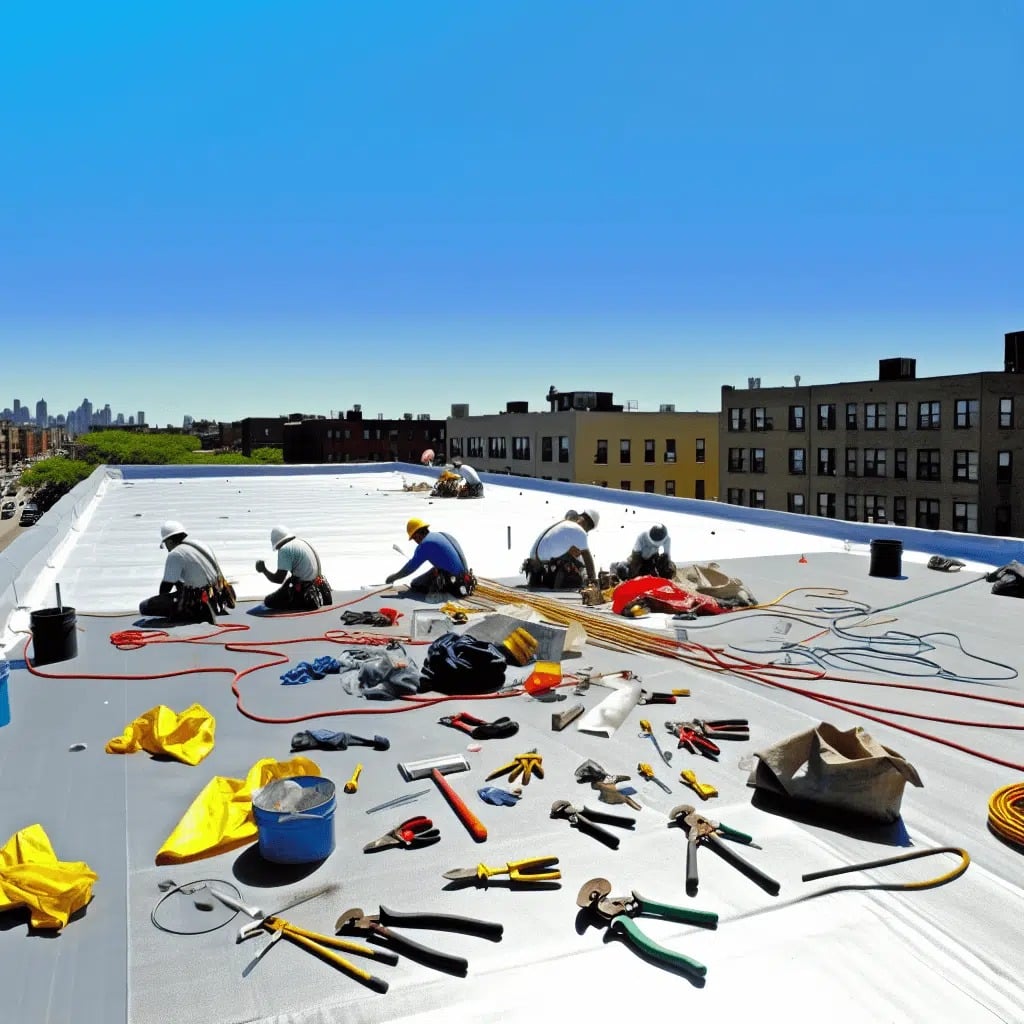Don’t Let Cold Showers Surprise You
Imagine stepping into your shower on a breezy summer morning, expecting the comforting embrace of warm water, only to be shocked by an icy cascade. This is a telltale sign that your water heater has been neglected. The truth is, regular water heater maintenance isn’t just about sustaining hot water; it’s about safeguarding your home against unforeseen disruptions that can rattle your routine and your wallet. Many homeowners overlook the importance of water heater upkeep until a malfunction forces them to take notice, leaving them dealing with the stress of emergency repairs. It’s clear – maintaining your water heater isn’t just a luxury; it’s a necessity for day-to-day comfort.
Stay Ahead with Preventive Care
Taking a preventive approach by scheduling routine water heater maintenance can be the difference between a reliable system and a costly breakdown. Just as we prepare our homes for summer with air-conditioning tune-ups, your water heater demands similar attention to cope with the increased demand of the season. Did you know that routine checks can extend the life of your water heater and optimize its performance? This isn’t just about technicalities; consistent maintenance ensures your daily hot water comfort isn’t suddenly upended. As summer brings in more outdoor activities, from washing off beach sand to extra laundry, the last thing you need is a water heater that fails to keep up.
It’s More Than Just Maintenance; It’s Peace of Mind
Consider the reassurance that comes with knowing your water heater is in optimal condition, proactively guarded against typical wear that leads to costly damages. Early detection of issues like sediment buildup, which hampers efficiency and spikes heating costs, is a prime focus of regular maintenance. Notorious for its stealth, sediment accumulation can silently compromise your water heater, but a yearly flush performed during a maintenance check can mitigate this threat. Such proactive measures are influential in preventing malfunctions, emphasizing the mantra that an ounce of prevention is well worth a pound of cure. By committing to a maintenance routine, you are not only securing uninterrupted hot water but are also taking a stand against the lurking perils of neglect.
Deep Dive into Water Heater Health
Maintaining a water heater goes beyond just a cursory glance; it involves a detailed examination of its components to ensure everything operates smoothly. Sediment, often originating from naturally occurring minerals in your water, can settle at the bottom of your tank, far from benign, this sediment forms an insulating layer, hindering heat transfer and forcing your heater to work harder – leading to increased wear and energy costs. Regular flushing, a task that might seem mundane yet is pivotal, removes this sediment and restores your water heater’s efficiency. It’s also worth noting that elements such as the anode rod, which protects against corrosion, should be checked to prevent rust and leaks. Understanding and caring for these parts not only prolongs your system’s life but can save you a significant amount in energy and repair bills.
Proactive Measures for Lasting Performance
During a maintenance service, professionals will inspect the pressure relief valve, a small yet crucial component meant to release pressure if it exceeds safe levels. If ignored, a faulty pressure relief valve can turn a functioning system into a hazard, underscoring the importance of this checkup. Similarly, setting the correct temperature on your water heater is more than just a comfort preference; it’s a balance between conserving energy and preventing bacterial growth, so ensuring it’s set between 120-140 degrees Fahrenheit is key. For households seeking greater efficiency, exploring options like green roof systems can complement the efforts to reduce overall energy consumption. While our focus now is on water heaters, incorporating green living practices can synergize with your eco-friendly goals.
Signs of Wear: Knowing When to Act
Being vigilant about your water heater’s condition can ward off unexpected breakdowns. Start by visually inspecting the unit for any sign of rust or water leakage around fittings and connections, frequently a prelude to more significant issues. Listen for unusual noises, too, such as popping or rumbling from within the tank, a soundtrack indicative of sediment’s disruptive presence. Should the hot water supply seem erratic or the water looks discolored, these are telltale signs demanding immediate attention. By being attentive to these signals and scheduling a professional assessment, you can nip potential problems in the bud, ensuring your home’s hot water system remains your reliable, unseen ally in daily life.
Securing Your Comfort with Year-Round Hot Water
The value of consistent water heater maintenance extends beyond mere convenience; it lies in the tranquility that comes with the assurance of a reliable hot water supply. This tranquility is rooted in knowing that proactive care can ward off the inconvenience of unexpected repair needs, often accompanied by exorbitant costs. An effectively maintained heater not only furnishes hot water but also operates under optimal conditions, conserving energy and thereby reducing utility bills. Encouraging such maintenance is not about fostering unnecessary concern but about promoting the prudent management of one of your home’s essential amenities. By investing in regular maintenance, homeowners can find solace in the long-term efficiency and smooth operation of their water heaters.
Guided Action for Homeowners
Taking the right steps towards water heater maintenance need not be an overwhelming task. It starts with simple actions: learning to recognize the early signs of potential issues, conducting visual inspections, and listening for telltale sounds that indicate maintenance is due. Homeowners should also consider insulation solutions for their older water heater tanks and associated piping, a measure that can offer year-round benefits by retaining heat and reducing the workload on the unit. For those interested in enhancing their property’s overall sustainability, integrating solutions such as Rhode Island siding with energy-efficient features contributes even further to energy conservation. Encouraging such practical homeowner engagement not only extends the life span of water heaters but reinforces the importance of a well-maintained home environment.
Embracing Expertise for Ultimate Peace of Mind
Finally, the true culmination of maintaining a water heater comes from the peace of mind that expert guidance provides. Scheduling annual inspections with professionals, such as those at Rinaldi Roofing, ensures that any sediment buildup or part deterioration is addressed before it escalates into a disruptive issue. These experts bring a wealth of knowledge to the task, helping homeowners understand the intricacies of their systems and how best to care for them. In doing so, they establish not only the trustworthiness of their services but also fortify the homeowner’s confidence in their water heater’s reliability. Thus, expert attention to water heater health becomes synonymous with homeowner assurance, solidifying a foundation of comfort and trust within the home.
Expert Advice for Water Heater Upkeep
Tip 1:
Drain and flush your tank regularly, at least once a year, to prevent sediment from impairing your water heater’s efficiency and longevity. Sediment can act as a barrier to heat transfer, causing your system to work harder and increasing your energy bills.
Tip 2:
Inspect the pressure relief valve routinely to ensure it’s in working order. This valve prevents pressure from building up too high in the tank, which can be dangerous and lead to leaks or even a burst tank.
Tip 3:
Check the thermostat settings to ensure they are at the optimal temperature, typically between 120-140 degrees Fahrenheit, for preventing scalding and to conserve energy without compromising on comfort.
Tip 4:
Look for any signs of wear and tear, such as rust on the tank or dampness around fittings and connections. Early detection of such issues can prevent larger, more costly repairs down the road.
Tip 5:
Consider insulating older water heater tanks and the first six feet of the hot and cold water pipes. This helps to maintain the water temperature at a consistent level, reducing heating costs and the strain on your water heater.
Expert Answers to Your Water Heater Queries
How often should you service your water heater for optimal performance?
For most water heaters, an annual service is recommended to ensure optimal performance and efficiency. This prevents sediment build-up and identifies any parts in need of repair or replacement.
What are the signs that your water heater needs maintenance?
Signs to watch for include inconsistent water temperatures, rumbling or banging noises from the tank, puddles or moisture around the base, rust-colored water, and a noticeable drop in water heating efficiency.
Can tankless water heaters benefit from annual checkups?
Yes, even tankless water heaters should undergo annual checkups to clean out any mineral build-up, check the burners, and ensure that all components are functioning correctly.
What steps can you take to maintain water heater efficiency?
Regularly drain the tank to remove sediment, check the thermostat settings, insulate the tank and pipes, and ensure the pressure relief valve is functioning properly to maintain your water heater’s efficiency.
What are common issues with water heater maintenance?
Common issues include sediment build-up leading to reduced efficiency, malfunctioning thermostat, corrosion of components, leaks, and failure of the pressure relief valve, which can pose safety risks.



